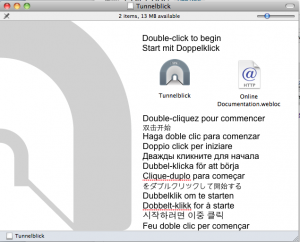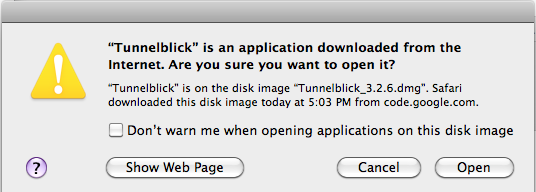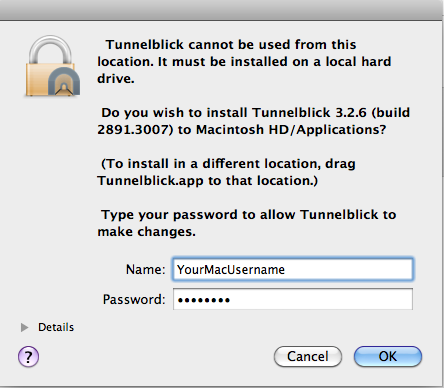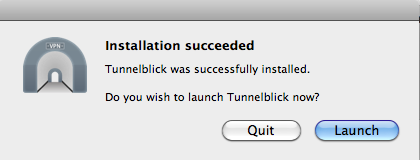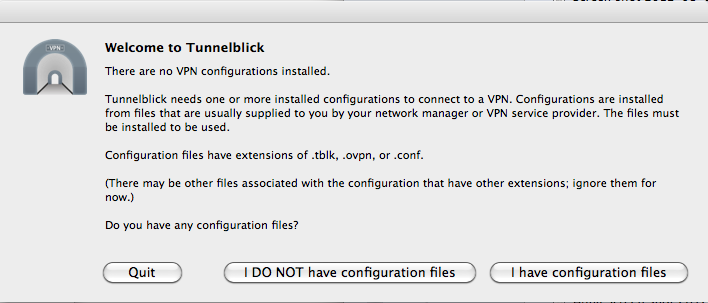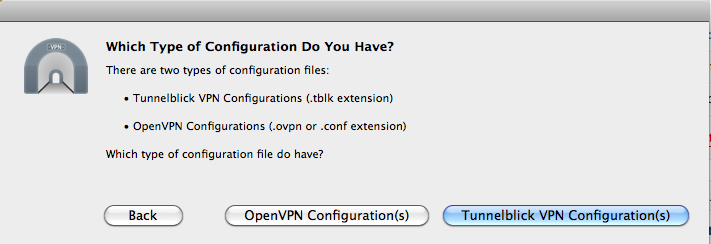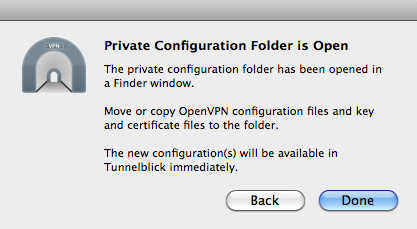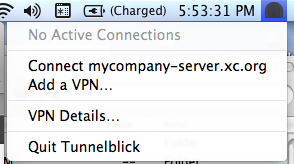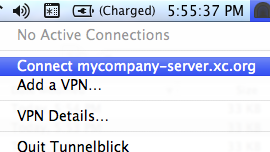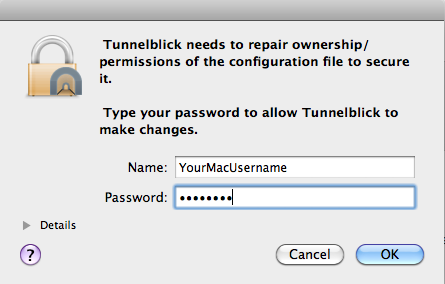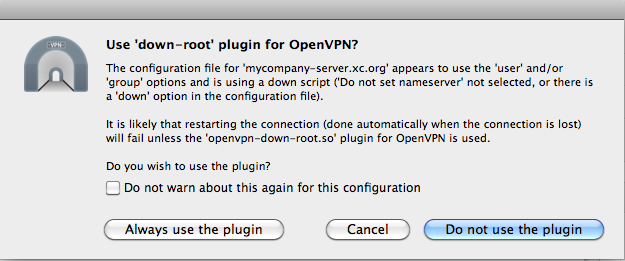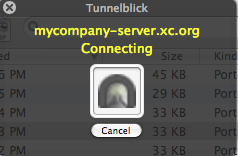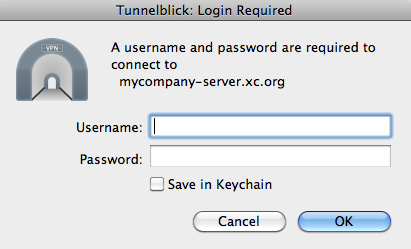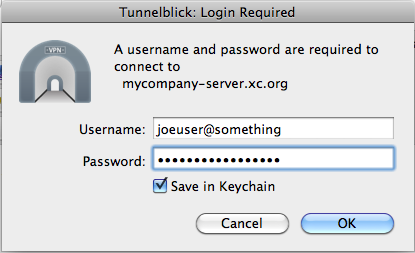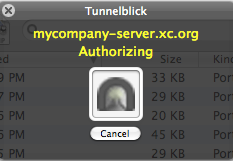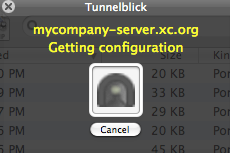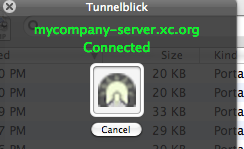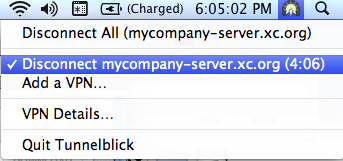To use OpenVPN, you must have received a configuration file from CrossConnect or from your company’s IT Department if your company has a group account with CrossConnect. Keep this file available for use later on in the installation process.
Download Tunnelblick, the OpenVPN Mac client from here: Click to visit download site
Locate the file in your Downloads folder and double-click it. After the Tunnelblick disk image opens, you will be prompted to double-click the Tunnelblick install application.
If you see a standard warning like the one below, click Open.
Agree to let Tunnelblick be installed on your local hard disk.
After installation, tell it to Launch Tunnelblick.
Click “Open” if the warning screen appears.
After Tunnelblick starts, it will place itself in the top right status bar (it looks like a black doorway) next to the Spotlight magnifying glass.
It will also open a Welcome screen which states that there are no configurations installed. Click “I have configuration files.”
When it asks which type you have, select OpenVPN Configuration(s).
When it asks which type you wish to create, select “Open Private Configurations Folder.”
The next screen will tell you that the Private Configuration Folder is open. It will pop open a Finder window to that particular folder. You can click and drag the Tunnelblick install screen out of the way if you need to.
Locate your OpenVPN configuration file in another Finder window, and then drag it to the open Finder window for the Private Configuration Folder.
Click “Done” on the installation screen.
Click the Eject button beside the Tunnelblick disk image in any Finder window to eject the disk image.
Click the Tunnelblick icon in the top right status bar
Select your configuration file name in the list.
Allow Tunnelblick to repair the permissions on the file by typing in your password for your Mac username.
When it prompts you about the ‘down-root’ plugin, select “Always use the plugin.”
At this point, you should typically see two screens pop up. In the top right, you should see the Tunnelblick status window saying “Connecting.” In the middle of the screen, you should see a login prompt.
Enter your login and password provided to you by CrossConnect (or your company, if this is a group account). If you do not want to have to type in the password every time, check the box beside “Save in Keychain.”
You will see the following screens as it finishes making a successful connection.
Afterwards, the status bar should have a green indicator in the Tunnelblick icon.
(If you receive any errors, of the connection is not successful, ensure that you have followed each of these steps correctly. Document what you have done, any differences from these instructions, and then contact our support department.)
Verify Your VPN Connection
At this point, you may use the Internet with your new VPN connection. Should you wish to verify that you are using the VPN for web traffic, you can use the Support page entitled “Show My IP.” (Or you can visit any of the sites which show you your public IP address. One such site is http://www.whatismyip.com/.) You should load the page with the VPN disconnected and then try reloading the page after connecting with the VPN to compare the differences.
To disconnect, click the Tunnelblick icon in the status bar and choose Disconnect on your configuration.
NOTE: Some Mac users have experienced a problem using their local Internet access on wireless connections. After disconnecting from the VPN, if you cannot browse the Internet, simply click the wireless icon in the status bar, choose “Turn Airport Off.” Then click it again and choose “Turn Airport On.” You should then be able to use your local Internet access again.

